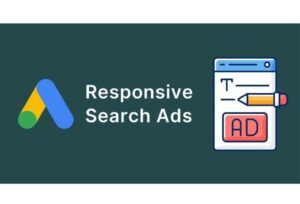Strong copy is still the foundation of successful campaigns. Ads need words that directly connect with user intent, even with advanced automation. In this guide, we will walk you through a step-by-step process for using generative AI as a creative partner for content creation, explore new features like Performance Max, and explain how testing and compliance ensure your ads remain effective and policy-safe.
Why Strong Ad Copy Still Matters
Ad copy is the direct link between a user’s search and the action you want them to take. Even though campaigns are now highly automated, it is the words that convince someone to click. Strong copy communicates value in just a few seconds.
According to WordStream, the average click-through rate across Google Search campaigns is 6.66%, with top industries like entertainment crossing 13%. This shows how important well-written copy remains. Google Ads text creation must highlight clear benefits, address user intent, and reduce doubt. AI makes this process fast, but human editing makes the difference between average and outstanding results.
Step 1: Start With Customer Language
The strongest ad copy uses the same words that customers naturally use. Instead of writing from assumptions, you can analyze search term insights, online reviews, and common support questions. These sources reveal how people describe their needs, challenges, and goals.
When you use these exact words in your copy, ads feel more relevant. Automated content generation becomes more powerful when fed with this input, because it creates variations based on proven customer language rather than generic templates. This step makes sure your ads connect directly with search intent.
Step 2: Use AI to Draft, Not to Replace
AI tools are excellent for producing multiple variations quickly, but they are not a substitute for human writers. You should use them to create a wide set of headlines and descriptions, and then select and polish the best options.
Be specific when you are prompting. Clearly set character limits, ask for one clear benefit per line, and avoid overused words like “top-rated” or “best ever.” This way, the suggestions you receive are closer to what you need. The balance of automated drafts and human refinement produces ad copy that is both useful and authentic.
Step 3: Building Responsive Search Ads (RSAs)
Responsive Search Ads give flexibility by allowing you to add multiple headlines and descriptions. Google then tests combinations to discover what connects most with your audience. RSAs are more effective when you provide a diverse range of inputs.
Supply at least 8–12 headlines and 3–4 descriptions to maximize results. Assign each headline a clear role, such as focusing on pain points, showing benefits, providing proof, or driving action. Use pinning only where required, such as for disclaimers or pricing. Review the Combinations Report regularly to identify which headlines work best and replace weaker ones with new variations created through AI AdWords optimization.

Step 4: Leverage Performance Max for Generative AI Features
Performance Max campaigns bring AI-driven ad campaigns into full action. Instead of just running search ads, this campaign type allows your assets to appear across Search, YouTube, Display, Gmail, Discover, and Maps. By uploading a mix of text, visuals, and guidelines, you enable it to generate excellent assets for all channels.
Key features include long headlines up to 90 characters, which provide more space to highlight benefits clearly. The Brand Guidelines tool allows you to set tone, colors, and logos, ensuring AI-generated assets match your brand identity. PMax can also generate images and videos automatically if you do not provide them. The insights from PMax, including search terms and channel data, help you refine your copy for future campaigns.
Step 5: Test, Measure, and Improve
Paid search ad writing works best when you treat it as an ongoing process, not a one-time task. Regular testing and improvement help you stay ahead of competitors and adapt to audience changes.
Check key metrics such as CTR, CPC, and conversion rates weekly. Remove underperforming headlines or descriptions and replace them with new variations. Even a small increase of 5–10% in CTR can add hundreds of extra clicks every month. Generative AI makes it simple to refresh ad copy quickly, so you never run out of options for testing.
Step 6: Stay Compliant and Policy-Safe
Compliance should never be an afterthought in Google Ads. Disapprovals or suspensions waste both time and budget, and they often happen because of copy issues. Following editorial and advertising guidelines ensures your ads remain active.
Avoid misleading or exaggerated claims that sound too good to be true. Do not personalize ads based on sensitive details like health or financial status. Make sure grammar is clean and avoid unnecessary symbols or all-capital letters. A short pre-launch compliance check will help keep campaigns running smoothly without disruptions.
What Research Tells Us
Several recent studies confirm the importance of blending AI with human input. Search Engine Journal reported that AI-generated ads perform well but require human refinement to build trust. Surveys show that 95% of small and medium businesses believe AI will improve ads, with efficiency gains of up to 30%.
Teams that combine AI assistance with human editing often outperform both AI-only and human-only approaches. This shows why AI AdWords optimization is not about replacing creativity but about making it faster, smarter, and more consistent.
Frequently Asked Questions
1. What is the main advantage of using generative AI for ads?
The biggest benefit is speed. It creates multiple ad options in seconds, giving you more opportunities to test different approaches and find which message drives the most clicks and conversions.
2. How can I check if my ad copy is effective?
You can measure performance using CTR, CPC, and conversion rates. If certain lines show lower engagement, replace them with new variations until you find consistent winners.
3. Is generative AI for content creation suitable for every industry?
Yes, it works across all industries, but sensitive sectors like healthcare or finance require extra care. Ensure that the language remains accurate, policy-compliant, and does not over-promise.
4. How often should ad copy be updated?
It is best to review results every week and refresh ads every 2–3 weeks. Regular updates keep your campaigns relevant and help maintain strong engagement over time.
Conclusion
Writing effective Google Ads copy is about finding the right balance between automation and creativity. Generative AI for ad copywriting speeds up the process by providing variations, but it is human refinement that assures authenticity and compliance. Successful ads start with customer language, expand through testing, and improve through constant updates.
At iClick Advertising, we help brands combine human creativity with AI effectiveness to deliver ads that achieve measurable results and lasting growth. Schedule a consultation today and start boosting your ad performance!




